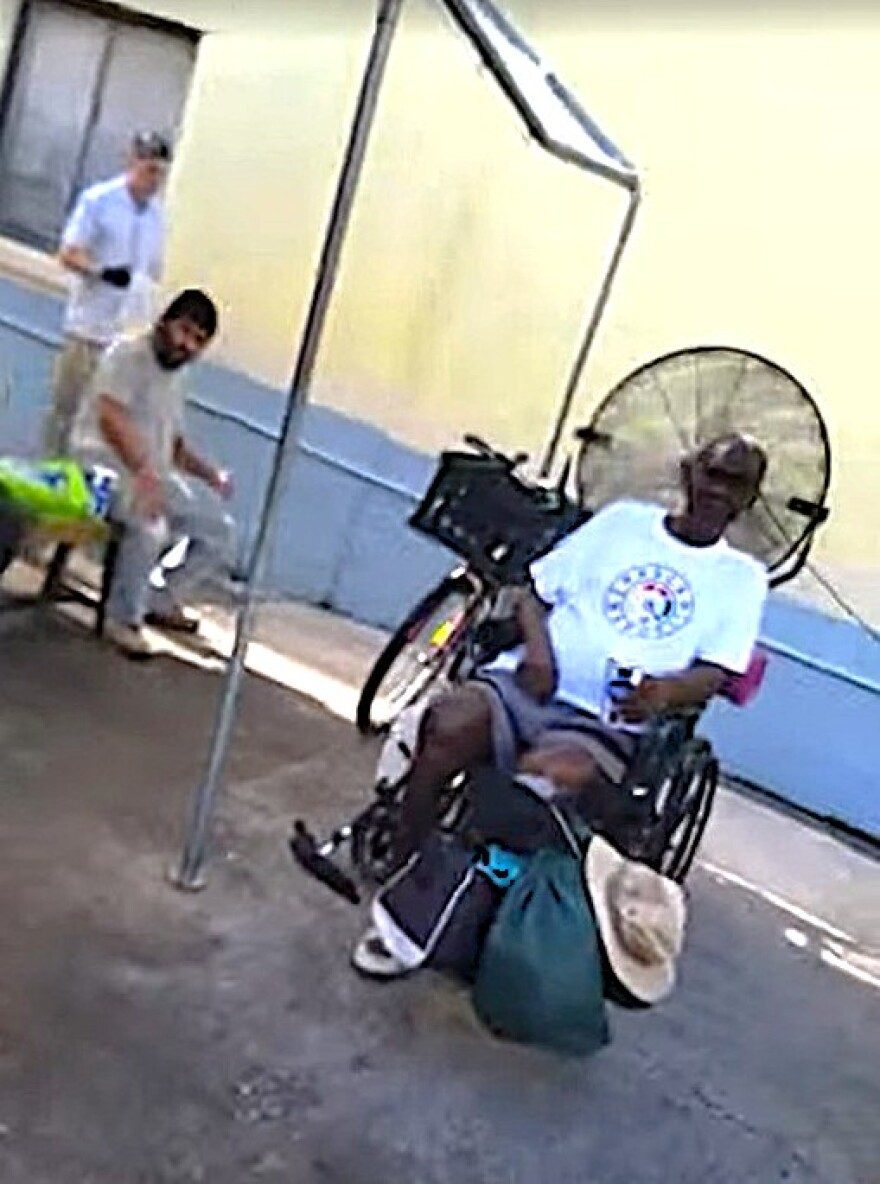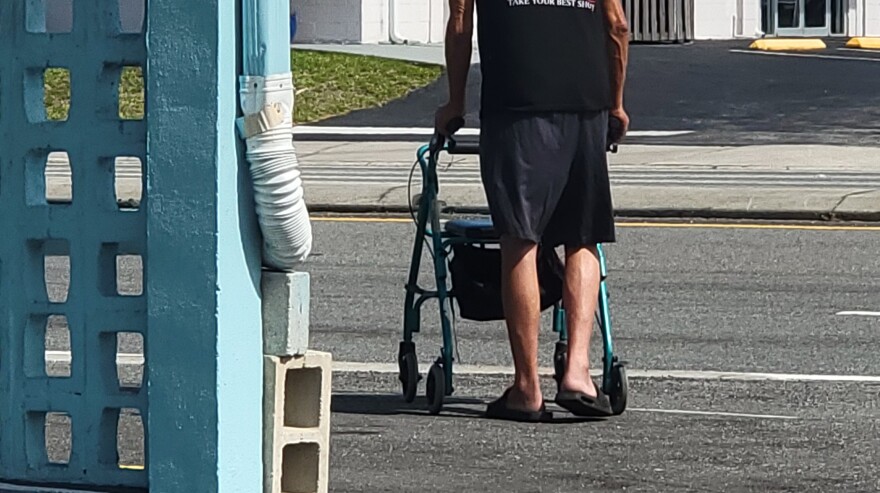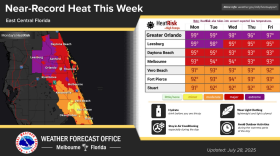With the heat index in triple digits again this week, local governments have opened cooling centers during the day to reduce people’s chances of heat-related illnesses – but these do not include overnight shelter.
Throughout the year, counties and cities work with local nonprofits and other community partners to ensure those experiencing homelessness and others who need suitable shelter during emergencies have somewhere safe to go during inclement weather conditions, such as named storms, freezing temperatures, or extreme heat. For heat, these services usually include areas with public access to shade, air-conditioning and cold water to prevent heat-related illnesses.
Most local governments in Central Florida rely on the heat index or “feels like” temperature that comes from the National Weather Service The NWS issues a heat advisory when the heat index hits 108 to 112 degrees Fahrenheit and a heat watch after 113 degrees.
Chief Lauraleigh Avery with Orange County Fire Rescue's Emergency Division said these kinds of life-threatening temperatures don't happen overnight. Therefore, cooling aid is usually offered during the day – only in order to save lives and reduce the number of emergency calls.
“I'm not saying that it couldn't happen,” she said. “But when we're seeing that 108 index, it's typically during the daytime hours, so we don't have a need to have people at cooling locations overnight. If we ever got to that point where it was extreme, then we might consider doing that, but for right now, our cooling locations are able to manage the peak heat of the day.”
Always subject to change
Avery has been with the county for 34 years and chief since 2020. She said that, as the climate changes, the county and emergency services have had to adapt – and will continue to do so – as necessary.
“We keep getting warmer and warmer every single year. So, really, we rely on all of our partners in the community to tell us what the needs are, and if the heat became so extreme that our partners reach out and they say, ‘Hey, we need help,’ like our Homeless Services Network – we work hand-in-hand with them, and let's just say all of their sheltering, their centers, get absolute at capacity, and they're seeing a major need for our homeless individuals, for more cooling at night because the temperatures maintain a very high degree overnight – then we would have those conversations and work to support them in that, to make sure that we're taking care of our community,” she said.
Martha Are is the CEO of the Homeless Services Network of Central Florida. She said the Network manages the Orange-Seminole-Osceola area and helps counties implement their emergency plans, which can include extending shelters’ capacity, opening new locations, and offering free rides to these places.

“We put out notice when we anticipate the heat index being at 108, and several of our nonprofit agencies will then try to extend their capacity or to do some extra services related to heat, but that's different from each of the counties making a determination about the use of their public buildings and resources. And so they're not always on exactly the same page as to when they open up public spaces or change the use of public spaces,” Are said.
Are said services are often used by the unhoused and unsheltered but also families without AC at home, seniors lacking vehicular transportation, and anyone who just needs to get out of the heat. She said people with mobility issues, older adults and people with disabilities or comorbidities – many of whom carry medication that needs to stay cool during the day – are considered some of the most vulnerable to heat-related risks. Outdoor workers are another at-risk group.
Public places like libraries and parks are often called upon to serve as cooling stations, and even some government buildings welcome people during extreme heat expected to bring more people in for support. However, she said, nonprofits could activate their own cooling resources whenever they feel it’s necessary.
Others can step in to help
The Christian Service Center for the Homeless in Orlando serves as a cooling station, primarily for unsheltered people and families lacking heat relief, as soon as the heat index hits 103 degrees – sometimes sooner. CEO Eric Gray said dangerous health conditions like heat exhaustion, heat stroke, or heat-related injuries can happen well before the NWS’ 108 degree advisory threshold, so his organization chose a different parameter.
“We decided on 103 because the heat advisory that the municipalities and counties use is intended for people who work or exercise outside or may live in a home without AC. Our clients are outside 24 hours a day. Once the heat index gets to 103, people begin dehydrating at a rate that leads to them eventually not sweating – this leads to organ failure,” he said.
According to the Environmental Protection Agency, heat drives the most natural-disaster related deaths in the U.S. Gray said the number of emergency calls to the organization doubles, even triples, during the hot summer months due to things like heat exhaustion and burnt feet.
He said a lot of chronically homeless people are at higher risk of conditions that can be affected by heat and that they deserve some help to survive until they can get the help they need.
“Humans typically cool down at night when we sleep, but if you are outside at night and never have a chance to cool down, it can lead to exacerbated health issues in addition to heat stroke. We actually have been opening even when it doesn’t get to 103 when we see multiple consecutive days of high temperatures,” Gray said.
Chief Avery said it’s important for all residents to stay up to date on weather events by following the NWS and the county for updates and alerts.
Lillian Hernández Caraballo is a Report for America corps member.






